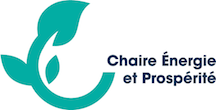To be published in Environmental and Resource Economic in January 2026
Adopting disruptive technologies for decarbonizing hard-to-abate industrial sectors requires experimentation through demonstration (pilot) projects. However, from an economic perspective, the potential long-term benefits and the difficulties in designing relevant public policies are not addressed in the standard valuations of those projects. This paper shows that cost-benefit analysis (CBA) at the sector level provides clues to solve these issues, integrating knowledge spillovers from the pilot throughout the industry and the technical change from value-added cost components in adjacent activities. Such analysis gives the optimal trajectory for decarbonizing the sector. Our suggested CBA also delivers the relevant abatement cost for the pilot, a key indicator of public policy. Applied to France’s large-scale, high-quality container glass sector, CBA obtains an abatement cost of around 200€/tCO2 for the pilot deploying a decarbonized hybrid technology, which is 50% lower than previous standard approaches. Additionally, we show that subsidizing the pilot associated with a commitment to transfer knowledge to follower plants is sufficient to decentralize the social optimum if governments implement an emissions tax internalizing the environmental cost. This approach could be applied in other hard-to-abate sectors to trigger the early deployment of disruptive innovations and facilitate the designing of relevant public policies
Découvrez en ligne la dernière newsletter et inscrivez vous pour recevoir la prochaine


